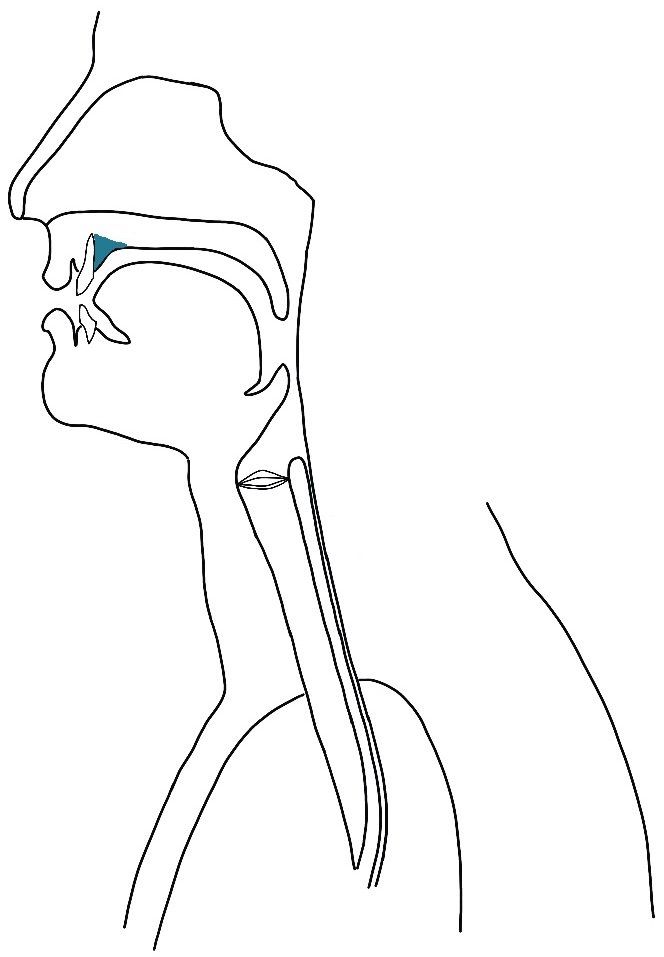The D-sound
Now let’s talk about the D-sound. Still at the alveolar ridge.
THE SOUND
The D-sound /d/ is produced when air is briefly stopped from leaving the vocal tract when the tip of the tongue presses against the alveolar ridge (hard spot behind the top teeth) while the sides of the tongue press against the upper side teeth.
The sound can be aspirated when the air is released as a puff of air. . At the end of a word, the D-sound may not be aspirated (a.k.a. it doesn’t need to be), which is why at ends of words like bad, it may seem like a native English speaker doesn’t fully finish the sound.
The D sound /d/ is voiced (the vocal cords vibrate while producing it), and is the counterpart to the voiceless /t/ that was covered last week.
If you are reading this blog post shortly after reading the T-sound blog post, you will notice a majority of the information is the same. The main difference is the voicing - the buzzing of the vocal cords.
THE SOUND IN DIFFERENT POSITIONS.
Here's the sound in different positions of a word.
BEGINNING OF THE WORD - down, dine, dog
MIDDLE OF THE WORD - middle, modern, wooden
END OF THE WORD - sand, bleed, wood
SITUATIONS THAT SEEM LIKE THE SOUND BUT AREN'T
Wednesday - The first D-letter is silent. So the correct pronunciation is WENZday
pledge, grudge, badge - In many words with the letter combination ‘dg’, a single sound is made instead of separate ‘d’ and ‘g’ sounds. So although a D-letter is present, it is not a D-sound. The correct sound is a [d͡ʒ], which is the symbol for the J-sound - which is an affricate, not a stop.
handsome, sandwich, handkerchief - If you listen to a native English speaker pronounce these words, the D-letter is silent. Instead, they are HANSOM, SANWICH, HANGkerchief
WHY IT MAY BE HARD
It can be hard to know WHEN to pronounce the D-sound and when not to. As I mentioned before in the T-sound post, sometimes the pronunciation of a T-letter seems more like a D-sound.
As I explained before:
water, later, butter - In this word, North American English speakers will use a flap t or /ɾ/ which looks like an ‘r’ but without the top line, it just curves. This distinction is a North American English pronunciation difference - This is actually the explanation of why sometimes the T-letter is pronounced like a D-sound instead.
butter (BUDer), university (uniVERSidy), pretty (prih-dee), water (WAder), computer (comPUder), Twitter (TWIder)
To expand on my explanation further, the flap t or /ɾ/ is a voiced alveolar flap, a sound produced by the brief tapping of the alveolar ridge with tongue and is a sound typically made between vowels.
Because the flap is voiced as well and the action (touching the alveolar ridge with the tip of the tongue) is the same as the /d/, the only noticeable difference between the flap and a stop is the length of time. Quick D-sounds will sound like flaps and vice versa. Slow D-sounds will not be mistaken for flaps.
This is exactly why in North American English (both General Canadian English accent and General American English accent), latter and ladder are pronounced the same.
WHAT TO DO
So let's say you do have trouble with your D-sound. What can you do about it.
Well here are the features of the D-sound.
Place of articulation - The tongue tip firmly touches the ridge behind the top teeth
Manner of articulation - Airflow is temporarily blocked by the tongue before is allowed to burst
Voiced or unvoiced - voiced (this means the vocal cords vibrate while producing the D-sound).
TIPS & EXTRA CONSIDERATIONS
1. Think about the position of the letter to help figure out the pronunciation.
If the D appears as the last sound of a word, it does not need to be aspirated (a.k.a. you don’t need to release the D-sound. It just stops)
Example words and phrases include: had, that’s what I said, I did, dead, paid.
Review the T-sound blog post. Some T-letter words may in fact be pronounced more similarly to a D-sound instead.
2. There are silent D-letters out there.
Pay attention to words with the letter combination ‘ND’, ‘DG’ and ‘DN’. Native English speakers might not actually pronounce the D-letter.
3. According to Wikipedia, the most common consonant phonemes of the world's languages are [t], [k] and [p]. So, if you have trouble producing the D-sound, start from the T-sound. The shape of the mouth and contact point in the mouth is the same. You just need to work on the voicing (vocal cord vibration).
I’m breaking down every single sound down for you so that you can learn how to produce each sound in English accurately. Sometimes, we’ll have easier sounds and sometimes we’ll have harder sounds.
If you’ve grasped this sound, then great! But if you’ve got a tip that might work for others, or you took a while to produce this sound correct but something clicked for you, let me know down below in the comments. My goal is to have a community know what to do when they’re stuck!

